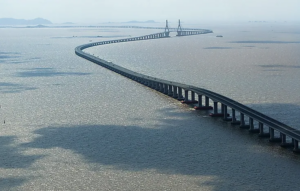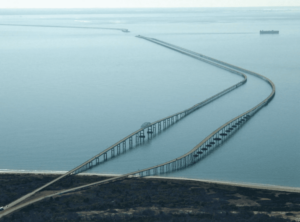When you look at many modern bridges, you may notice that their design incorporates graceful curves rather than straight paths. This design choice is rarely for aesthetics alone—it serves multiple structural, safety, and environmental purposes. Here are the primary reasons why engineers and architects often opt for curved bridges instead of straight ones.
1. Enhanced Structural Stability
Curved bridges, such as arch bridges, are inherently more stable than straight bridges because of how they distribute loads. The curvature naturally directs weight towards the ends, allowing for more even distribution across the structure. This reduces the pressure on any single point and improves the bridge’s overall durability, especially important in areas with high traffic loads or seismic activity.

2. Efficient Use of Materials
A curved bridge design, especially with arches, often requires fewer materials than a straight bridge to support the same load. The curve allows the bridge to withstand compressive forces more effectively, making it possible to span longer distances with fewer materials. For example, in long-span bridges, the use of a curved design can provide the necessary support without requiring extra columns or additional materials, helping to reduce costs and environmental impact
3. Adaptation to Natural Landscape and Obstacles
Bridges are frequently built over rivers, valleys, or areas where there may be obstacles, such as hills, buildings, or protected ecosystems. A curved path allows the bridge to adapt to these natural features without requiring extensive reshaping of the land or demolition of structures. This adaptability makes it easier to integrate the bridge into urban environments where buildings and roadways already exist. Curved designs often mean less environmental disruption, which can be an important consideration for sustainability.
4. Improved Driver and Pedestrian Safety
Curved bridges encourage slower vehicle speeds, which can enhance safety, especially in urban areas with high traffic. The curve requires drivers to pay more attention, naturally reducing speed and decreasing the risk of accidents. In addition, curves often provide better sightlines for drivers and pedestrians, helping to improve visibility and reducing blind spots.

5. Aesthetic Appeal and Landmark Potential
While functionality often drives bridge design, the aesthetic appeal of curved bridges cannot be overlooked. Curved lines offer an elegance and fluidity that straight lines lack, making these bridges not only functional but also iconic. Some of the world’s most famous bridges, like the Sydney Harbour Bridge or the Golden Gate Bridge, incorporate curves that enhance their visual appeal and turn them into landmarks that attract tourism and local pride.

6. Effective Handling of Environmental Forces
Curved bridges tend to perform better against environmental forces such as wind and seismic activity. The arc or arch shape in many curved designs dissipates forces more efficiently than a straight bridge. This resilience can be critical in areas prone to earthquakes or strong winds, where straight structures may be more vulnerable to collapse.
Examples of Curved Bridge Success
Examples like the Lupu Bridge in Shanghai and the Garabit Viaduct in France highlight how curves contribute to both structural integrity and beauty. The Lupu Bridge’s arch design supports immense loads, allowing it to span over 500 meters, while the Garabit Viaduct’s curves accommodate both the valley landscape and the structural requirements for train transit.
In conclusion, the choice to build a bridge with a curve instead of a straight line is a multifaceted decision that encompasses stability, material efficiency, environmental adaptability, safety, and aesthetic considerations. The next time you cross a curved bridge, remember that its design is not just visually appealing but a carefully calculated choice that combines engineering precision with architectural beauty.

